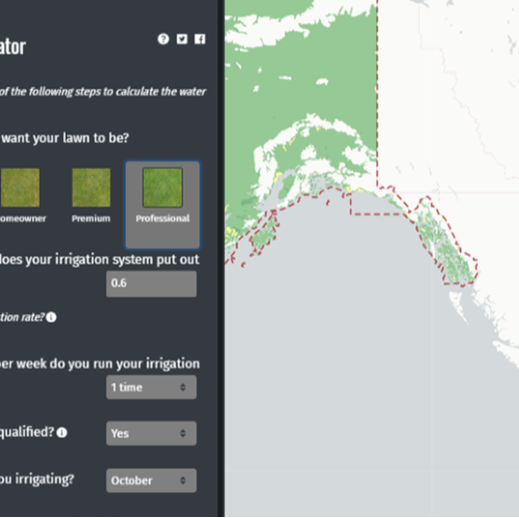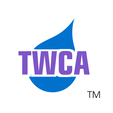 The TWCA Irrigation Calculator accounts for environmental conditions to estimate irrigation run-times in minutes. The TWCA Irrigation Calculator accounts for environmental conditions to estimate irrigation run-times in minutes. Built on a body of research coming out of NexGen Turf Research and University of Arkansas the TWCA Irrigation Calculator is designed to educate homeowners on appropriate run times for turf irrigation. With a broad coalition of researchers in public and private research institutions, TWCA provides a useful education tool to reach end-users and educate consumers about the different choices they can make when managing their outdoor water use. The TWCA Irrigation Calculator estimates irrigation runtimes across the contiguous United States. These estimates account for many of the physical characteristics of a site including ET, soil type, turf water requirements, and even desired green cover affecting water requirements. This project is the culmination of multi-year collaborations with University of Arkansas, Oregon State University, and University of Washington. The first question that needed answering for TWCA was, “What role does soil type play in volumetric water demand?” To answer this, TWCA turned to then graduate student, Tyler Carr at University of Arkansas and his Professor, long-time TWCA Collaborator, Dr. Doug Karcher. The type of soil a turf is grown on can drastically affect irrigation practices. Soils high in sand content have a lower water holding capacity than silt loam soils, therefore turf grown on sand must be irrigated more frequently to achieve desired turf quality for a lawn. Prior to this project with the TWCA, it was unknown whether these soil types varied in the actual volume of water required over a given period in the absence of rainfall. The results from this project indicate that, under prolonged drought stress, soil type has minimal effect on overall water consumption. The implication for homeowners is that turf can be irrigated three times weekly without using any more water than if all the irrigation was applied during a single weekly application. This is especially important if the turf is grown on a sandy soil, as weekly irrigation can negatively affect turf quality. After determining the impacts of soil type on water requirements TWCA moved to incorporating soil type, ET data, and precipitation from historical averages into a model. All data was aggregated from free publicly available resources. Dr. Zhao at Oregon State University (now at University of Washington, Seattle) led the efforts to create the Irrigation Calculator from the data available. Bo and his team scrubbed the data and created the tool as it currently sits. The development team was forced to make some assumptions in the interest of efficacy. The most noticeable is the warm season turf range being drastically limited compared to that of the cool season range. Given the difficulties of the transition zone and the ever so slight edge of survival afforded to cool season turf TWCA chose to maximize the range of cool season turf while maintaining a limited range for warm season options. There are many warm season turf cultivars that have excellent cold tolerance and thrive well north of the TWCA’s default assumption and we encourage everyone to find those cultivars best suited to their growing conditions. As a team, we also chose to use the native surface soil layer as the default soil type. In some areas where the data was sparse, we extrapolated soil types from the surrounding areas. Using the Irrigation Calculator is a snap. End users simply select the green level they are looking for, the precipitation rate of their irrigation system and verify the watering month. Finally, enter the correct zip code or city name to get the desired irrigation run time in minutes. Users should note that the TWCA Irrigation Calculator does not accurately evaluate irrigation precipitation rates greater than one inch/hr. This conscious choice only affords end users the option of using more water efficient gear drive or rotary nozzles. Even though the TWCA Irrigation Calculator is a great reference tool it is not perfect. The Calculator does not account for root zone depth, water lost to management or slope on site; these are all special considerations that will affect the cycling of the irrigation system. TWCA sees a future for this tool expanding the function to include the entirety of the United States and Canada. As the tool develops, we are also looking to create greater responsiveness to rain events, increase the range of irrigation precipitation rates to accommodate professional users, and potentially include links to outdoor water conservation programs for TWCA Government members.
0 Comments
|
Program AdministratorJack Karlin is the Program Administrator for TWCA. His interest is in using policy and the built environment to create livable and sustainable communities. Archives
April 2024
Categories
All
|
|
|
Turfgrass Water Conservation Alliance
|
Copyright © 2022 Turfgrass Water Conservation Alliance. All rights reserved.


